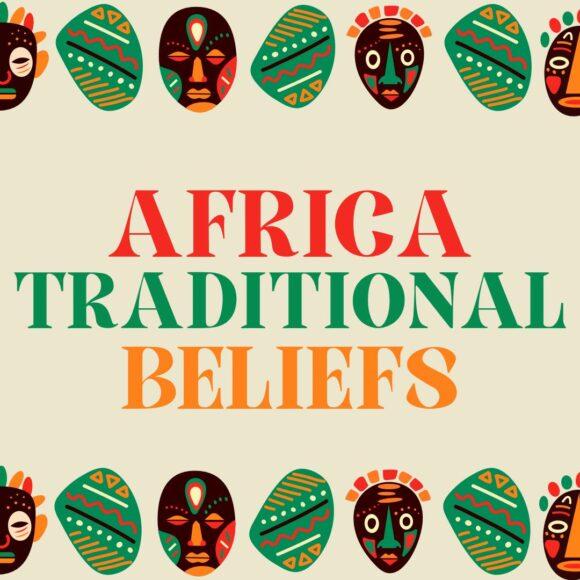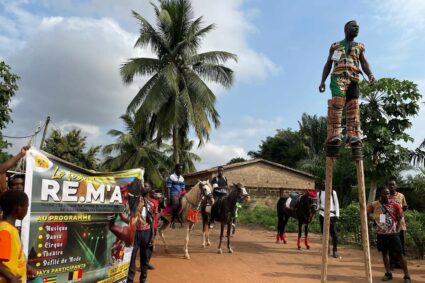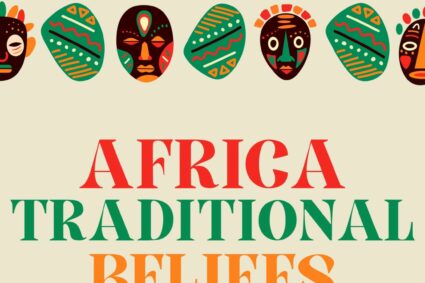
by Tony Hemrix
Africa, the cradle of ancient civilizations, has developed a rich textile tradition where each fabric tells a story, expresses an identity, and conveys a message. These textiles are not mere adornments; they are cultural archives and coded communication tools. From the woven fabrics of the Akan people in Ghana to the artisanal dyes of the Dogon in Mali, African textiles have stood the test of time while preserving their symbolic meaning.
1. Kente from Ghana: A Fabric of Power and Proverbs
Kente, originating from the Akan people, particularly the Ashanti of Ghana, is one of Africa’s most prestigious fabrics. According to legend, its weaving technique was inspired by the observation of spider webs over 400 years ago. This complex weaving style was traditionally reserved for kings and chiefs during important ceremonies.
1.1. Kente and the Ashanti Monarchy
The Ashanti Empire (1670–1902) played a key role in spreading Kente as a marker of power. Under the reign of King Osei Tutu and his successors, Kente became a royal emblem. Ashanti rulers wore Kente with specific patterns that reflected their wisdom, bravery, and divine status.
1.2. Proverbs Hidden in Kente Patterns
Each Kente pattern carries a meaning often linked to a proverb or ancestral wisdom. For example:
• Eban (fence motif): Symbolizes security and family protection.
• Eban nkuto (shea nut motif): Represents the kindness and benevolence of a leader toward his people.
Today, Kente is a symbol of African pride and is often worn during significant celebrations such as weddings and graduations. In the African diaspora, particularly in the United States, it has become an iconic element of university ceremonies.
2. Bogolan from Mali: A Fabric that Tells Stories
Bogolan, meaning “made with mud” in the Bambara language, is a traditional fabric from Mali and Burkina Faso. Its origins date back to the Mali Empire (1235–1600), founded by Sundiata Keita, where it was used by warriors and hunters for its believed ability to protect against spirits and mystical forces.
2.1. A Fabric Associated with Hunters and Initiates
Hunter societies, such as the Dozos, wear Bogolan as a sign of power and connection to supernatural forces. In some Dogon and Bambara communities, this fabric is also used to wrap women after childbirth, as it is believed to have purifying and protective properties.
2.2. Symbols Inherited from Ancient Rock Paintings
Bogolan patterns resemble ancient rock paintings from the Sahel region, which date back thousands of years. These stylized geometric shapes can represent elements of nature, spirits, or foundational myths. For example:
• Chevrons: Represent bravery and the strength of warriors.
• Circles: Evoke femininity and the cycle of life.
• Broken lines: Symbolize trials and spiritual transitions.
Bogolan was popularized in contemporary fashion by African designers such as Chris Seydou (Mali), who introduced it to international runways in the 1980s.
3. Wax Prints in West Africa: From Colonization to Cultural Reappropriation
Unlike Kente and Bogolan, Wax prints have foreign origins. These wax-printed cotton fabrics were introduced to West Africa in the 19th century by Dutch colonizers who sought to replicate Indonesian batiks for new markets. However, Africans reinterpreted these textiles, giving them unique names and meanings.
3.1. Wax Prints as a Tool for Social Communication
West African women transformed Wax prints into a subtle language of clothing. Some famous motifs convey implicit messages:
• “To govern is to foresee”: A kaleidoscope-like pattern symbolizing political foresight.
• “Mobile phone”: Represents accessibility and modernity.
• “Lips”: Indicates seduction or vigilance against rumors.
Wax prints became a significant political tool during Africa’s independence movements in the 1960s. Leaders such as Kwame Nkrumah (Ghana) and Thomas Sankara (Burkina Faso) encouraged the use of African textiles to assert national identity against Western influence.
Today, Wax prints remain a symbol of cultural resistance. They are widely used in feminist and pan-African movements, demonstrating the power of textiles as tools for social and political expression.
4. More than Clothing: A Cultural Identity Rooted in History
African textiles are far more than decorative elements; they reflect an ancient heritage. Whether worn during rites of passage, royal ceremonies, or political events, each fabric serves as an identity marker.
In the Mali Empire, kings wore ndop fabric (indigo-dyed cloth), a tradition still practiced among the Bamoun and Bamileke peoples of Cameroon. Similarly, among the Yoruba of Nigeria, the Aso Oke, a handwoven fabric, is reserved for grand occasions such as weddings and royal coronations.
5. The Rise of African Fashion: A Reinvented Legacy
Today, African and international designers are revitalizing these textiles by incorporating them into contemporary fashion. Designers such as Loza Maléombho (Côte d’Ivoire), Imane Ayissi (Cameroon), and Olivier Rousteing (Balmain, France) reinterpret these fabrics into haute couture pieces.
Museums have also taken an interest in these textiles:
• The Metropolitan Museum of Art (New York) has exhibited Kente fabrics in its African art collections.
• The Quai Branly Museum (France) preserves 19th-century Bogolan fabrics.
• The National Museum of African Art (Washington, D.C.) highlights the history of Wax prints and their impact on Afro-descendant culture.
Conclusion: A Language that Transcends Time
African textiles are more than just clothing; they represent an alternative form of writing, a living archive, and a universal language that transcends time and space. Even today, wearing Kente, Bogolan, or Wax prints is a way to showcase an ancient heritage, convey a message of pride, and affirm cultural identity in the modern world.
2 thoughts on “The Hidden Language of African Fabrics and Symbols”
Comments are closed.





Very interesting!!
thank you